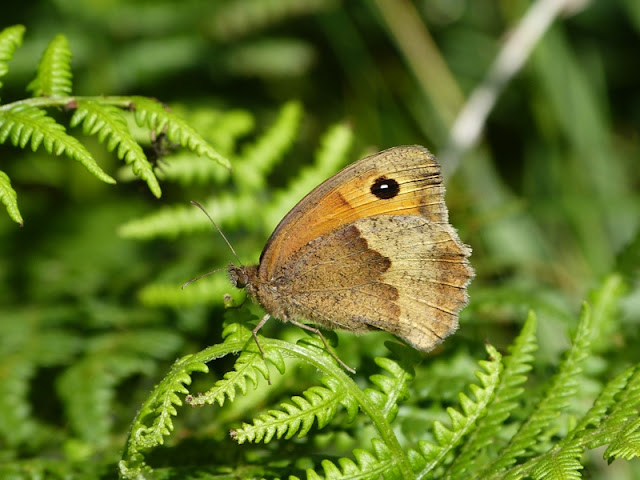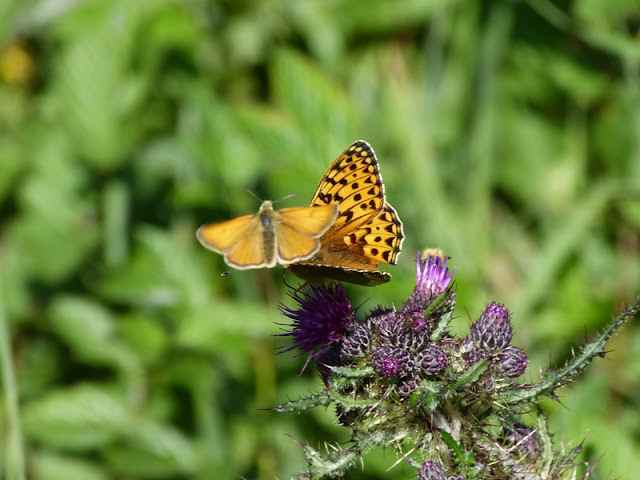I assumed they were Small White, Pieris rapae, because I had seen adults laying eggs although I couldn't be sure they weren't the caterpillars of Green-veined Whites, Pieris napi.
Later, once I saw the caterpillars were gone, I looked all over the walls of the house for chrysalises, but could only find one Small White chrysalis.
At the beginning of April this year I was sorting out the garden furniture in anticipation of a family visit when I notice a Small White chrysalis on the arm of a garden chair.
Knowing that it wouldn't be safe I carefully removed it and placed it in a jar lined with paper towel inside one of my rearing cages.
About three weeks later I was checking the chrysalises and noticed a number of small insects climbing around on the walls of the cage. I realised that these were parasitic wasps and I found about 15 of them.
When I checked the Small White chrysalis I noticed a neat round hole in it.
I haven't been able to identify the wasps, but I am interested to know more about their life-cycle. I presume that they either lay their eggs into caterpillars or chrysalises and they must develop inside the chrysalis early in the spring. It was the 24th April when I found the wasps, a time of year when the Small White would be either still be chrysalises or would have emerged into adults. Any eggs the butterflies lay would only hatch in early June, about six weeks ahead. I wonder if there is another host that the wasp uses at that time of year.
Happily there have been a lot of Small White butterflies flying around this year, so a good number made it through without being parasitised.
.jpg)


.jpg)
.jpg)
.jpg)















